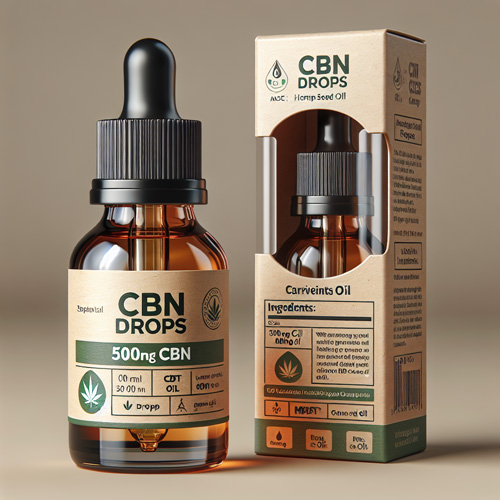
Hemp Biofuel Production Process
Hemp biofuel production process involves the conversion of hemp plants into renewable fuel sources that can be used as an alternative to fossil fuels.
This process typically focuses on the production of hemp biodiesel and ethanol. Hemp biomass, which includes the stalk, leaves, and flowers of the industrial hemp plant, is the primary raw material used in this process. The cellulose content of hemp biomass contains fermentable sugars that can be converted into ethanol through a series of steps, including steam pretreatment and enzymatic digestibility.
Similarly, hemp seed oil can be used to produce biodiesel through a process called transesterification. The production of hemp biofuels offers numerous benefits, including reduced greenhouse gas emissions and decreased dependence on fossil-based fuels.
By utilizing hemp as a biofuel source, it contributes to sustainable energy production and helps mitigate the environmental impact associated with traditional diesel and gasoline.
Benefits of Hemp-Based Fuels
Hemp-based fuels offer numerous benefits as a sustainable alternative to fossil fuels. One prominent advantage lies in their production process, which involves using hemp plants to create biofuels like hemp biodiesel and ethanol. Hemp is particularly suited for biofuel production due to its high cellulose content and ability to provide fermentable sugars.
One major advantage of hemp fuel is its positive impact on the environment. Unlike fossil-based fuels, hemp-based fuels have a significantly lower carbon footprint. The production of hemp biofuels is cleaner and emits fewer greenhouse gases. Additionally, hemp plants have a faster growth rate compared to other biofuel crops, allowing for a more efficient and sustainable fuel source.
Another environmental benefit is the reduced water usage associated with hemp fuel production. Industrial hemp requires less water than crops like corn or sugarcane used for bioethanol production. This decreased water usage helps to conserve this precious resource.
Furthermore, hemp fuel production does not compete with food sources. This non-competition aspect is crucial in ensuring food security and preventing the diversion of agricultural land away from food production. Hemp can be grown on marginal lands, avoiding conflicts with food crops.
Hemp-based fuels offer various benefits, including a more sustainable alternative to fossil fuels, cleaner production processes, reduced water usage, and non-competition with food sources. With their positive impact on the environment, hemp fuels prove to be a promising solution in the transition towards a greener energy future.
Hemp Plant Characteristics
Hemp plants, scientifically known as Cannabis sativa, are known for their versatile characteristics that make them an ideal candidate for biofuel production. Hemp plants have high cellulose content, which is essential for the production of ethanol and other biofuels.
This cellulose can be broken down into fermentable sugars through processes such as steam pretreatment, enabling the production of ethanol. Additionally, hemp plants have a fast growth rate and can be grown in various climates, making them a sustainable and efficient fuel source.
The industrial hemp biomass can be utilized for bioethanol production, while the hemp seed oil can be converted into biodiesel. These characteristics of hemp plants make them a viable alternative to fossil fuels, contributing to a cleaner and more sustainable energy future.
Composition of Hemp Plants
Hemp plants, also known as industrial hemp, have a complex chemical composition that makes them suitable for biofuel production. The composition of hemp plants can vary depending on the cultivar, but generally, they contain significant amounts of cellulose, hemicellulose, lignin, ash, extractives, and other components.
Cellulose, a polysaccharide, is the primary component of plant cell walls and represents a substantial proportion of hemp biomass. Hemicellulose, another polysaccharide, is the second most abundant component and provides structural support to the plant. Lignin, a complex polymer, plays a crucial role in the rigidity and strength of plant cells. Ash is the inorganic residue left after combustion and consists of minerals such as calcium, potassium, and magnesium.
The chemical composition of hemp plants can vary between different cultivars. Previous studies have shown wide ranges of composition in terms of cellulose, hemicellulose, lignin, and other components. This variation is important as it impacts the efficiency of biofuel production processes.
Lower lignin content and higher carbohydrate content are desirable in the biological conversion of biomass for biofuel production. Lignin is challenging to break down, while carbohydrates such as cellulose and hemicellulose can be converted into fermentable sugars. These sugars can then be transformed into ethanol or other biofuels through enzymatic or fermentation processes.
In summary, hemp plants have a diverse chemical composition, with significant amounts of cellulose, hemicellulose, lignin, ash, extractives, and other components. The lower lignin content and higher carbohydrate content make hemp biomass suitable for the biological conversion into biofuels like ethanol.
Cellulose Content in Hemp Plants
Cellulose, a major component of plant cell walls, plays a vital role in the production of hemp-based biofuels. Hemp plants contain a significant amount of cellulose, making them an attractive feedstock for biofuel production. The cellulose content in hemp biomass can vary depending on the cultivar, but its presence is essential for converting plant material into fermentable sugars.
To obtain cellulose from hemp plants, a process known as steam pretreatment is commonly employed. This involves subjecting the biomass to high-pressure steam, which breaks down the plant cell walls and makes the cellulose more accessible. The pretreated biomass can then be enzymatically or chemically hydrolyzed to convert the cellulose into fermentable sugars.
The high cellulose content in hemp plants makes them an excellent source of fermentable sugars, which can be further processed into biofuels like ethanol. These biofuels can be used as an alternative to fossil fuels in internal combustion engines. By utilizing cellulose from hemp plants, we can reduce our reliance on fossil-based fuels and contribute to a more sustainable energy future.
The cellulose content in hemp plants is crucial for the production of hemp-based biofuels. It can be obtained from hemp biomass through steam pretreatment and subsequently converted into fermentable sugars for biofuel production. By leveraging the cellulose content in hemp plants, we can move towards a greener and more renewable energy source.
Fermentable Sugars in Hemp Plants
Hemp plants are rich in fermentable sugars, which play a crucial role in the production of biofuels. These sugars, mainly glucose, fructose, and sucrose, can be extracted from hemp biomass and converted into biofuels such as ethanol through the fermentation process.
During fermentation, microorganisms, typically yeast, convert the fermentable sugars present in hemp plants into ethanol through a series of metabolic reactions. The sugars act as the primary source of food for the microorganisms, providing the necessary energy for their growth and ethanol production.
The availability and quantity of fermentable sugars in hemp plants are key factors in the biofuel production process. Different hemp varieties have varying levels of sugar content, with some varieties exhibiting higher yields than others. This variability necessitates careful selection of hemp varieties for optimal biofuel production.
In addition to the sugar content, the efficiency of sugar conversion also depends on the pretreatment conditions applied to the hemp biomass. Steam pretreatment, for example, breaks down the plant cell walls and increases the accessibility of cellulose, allowing for more efficient conversion of sugars into biofuels. The pretreatment conditions, such as temperature and duration, can influence the sugar yields and overall conversion efficiency.
Fermentable sugars present in hemp plants serve as the feedstock for biofuel production. The sugar content varies among hemp varieties, and the pretreatment conditions significantly impact the efficiency of sugar conversion. By harnessing these fermentable sugars, we can effectively produce biofuels from hemp plants, contributing to a more sustainable energy future.
Pretreatment Processes for Biofuel Production
Before the hemp biomass can be converted into biofuels, it must undergo a pretreatment process to enhance its efficiency and accessibility for sugar conversion.
One commonly used method is steam pretreatment, which involves subjecting the biomass to high temperatures and steam pressure. This process helps break down the plant cell walls, making cellulose more accessible to enzymes during hydrolysis. The temperature and duration of steam pretreatment can greatly affect the sugar yields and overall conversion efficiency.
Another pretreatment method involves the use of ionic liquids, which can dissolve and solubilize the biomass, making the cellulose and hemicellulose more readily available for conversion. This method has shown promising results in improving the enzymatic digestibility of hemp biomass.
Overall, pretreatment processes play a crucial role in maximizing the sugar content and conversion efficiency of hemp biomass for biofuel production.
Steam Pretreatment for Maximizing Ethanol Yields
Steam pretreatment is a crucial step in the production of ethanol from hemp plants, as it maximizes ethanol yields and enhances the overall efficiency of hemp biofuel production. This process involves subjecting biomass to high-pressure steam, which breaks down the biomass structure and increases the accessibility of cellulose content in hemp plants.
The steam pretreatment process consists of several steps. First, the biomass is loaded into a pretreatment reactor, where it is exposed to steam under high pressure. The combination of high pressure and temperature allows the steam to penetrate the biomass, causing the cellulose to undergo structural changes. This enhances the enzymatic digestibility of the cellulose, ultimately leading to increased sugar yield.
Cellulose content in hemp plants is a key factor in ethanol production, as it serves as a source of fermentable sugars. Steam pretreatment increases the release of fermentable sugars from the hemp biomass by breaking down the complex cellulose structure. The pretreatment process also helps to reduce the lignin content, which further improves the accessibility of cellulose and increases the overall sugar yield.
To achieve maximum ethanol yields, it is essential to maintain optimal conditions during steam pretreatment. These conditions include specific temperature, pressure, and duration of treatment. Additionally, the process requires anaerobic conditions to minimize the degradation of sugars and to prevent the formation of inhibitory compounds. Maintaining optimal conditions ensures the maximum conversion of cellulose into fermentable sugars and ultimately results in higher ethanol yields.
Steam pretreatment is a critical process in hemp biofuel production as it maximizes ethanol yields by enhancing the cellulose content and increasing the availability of fermentable sugars. By following the optimal conditions and utilizing anaerobic conditions, the steam pretreatment process plays a vital role in the efficient production of bioethanol from hemp plants.
Optimizing Solid Loadings and Energy Content During Pretreatment Processes
Optimizing the solid loadings and energy content during pretreatment processes is crucial for efficient hemp biofuel production. Solid loadings refer to the amount of biomass used in the pretreatment reactor, while energy content pertains to the energy input required to process the biomass.
The solid loading has a significant impact on ethanol yield and concentration. Higher solid loadings can lead to decreased ethanol yields due to insufficient mixing and decreased enzymatic digestibility. On the other hand, lower solid loadings can result in higher ethanol yields but lower ethanol concentrations. Thus, finding the optimal solid loading is essential to maximize both yield and concentration.
Studies have shown different correlations between ethanol yield and solid loading for various cases. In some instances, increasing the solid loading led to higher ethanol yields, while in others, there was no significant correlation. It is important to consider the specific characteristics of the biomass and the pretreatment method employed to determine the ideal solid loading.
Additionally, when evaluating pretreatment methods, it is crucial to consider the sugar and ethanol yields obtained from low solid loading simultaneous saccharification and fermentation (SSF). While low solid loading SSF may result in higher sugar and ethanol yields, it often requires longer processing times and higher operational costs. Balancing the cellulose-to-ethanol conversion efficiency with energy consumption is key in optimizing solid loadings and energy content during the pretreatment process.
Optimizing solid loadings and energy content during pretreatment processes is essential for maximizing ethanol yield and concentration in hemp biofuel production. Considering the correlation between solid loading and ethanol yield, along with the impact of low solid loading SSF, allows for efficient cellulose-to-ethanol conversion.
Anaerobic Conditions Required for Pretreatment Processes
Anaerobic conditions play a crucial role in the pretreatment processes involved in hemp biofuel production. These conditions are necessary to facilitate the breakdown of hemp biomass into fermentable sugars, which are essential for maximizing biofuel yields.
In anaerobic conditions, the absence of oxygen allows for specific microorganisms to thrive and efficiently convert the complex carbohydrates present in hemp biomass into simpler sugars. This breakdown process is known as hydrolysis, and it is the initial step in biofuel production.
The anaerobic conditions create an optimal environment for the microorganisms, such as bacteria and fungi, to secrete enzymes that break down the cellulose and hemicellulose present in hemp biomass. These enzymes effectively break the complex polysaccharides into monomeric sugars, which can be easily fermented into ethanol or other biofuels.
To create anaerobic conditions during pretreatment, various methods can be employed. One common approach is steam pretreatment, which involves subjecting the hemp biomass to high-pressure steam in a sealed environment. This steam not only helps soften the lignocellulosic structure but also displaces and removes oxygen, creating the desired anaerobic conditions.
Another method is the use of ionic liquids, which are solvents that can dissolve the biomass while minimizing oxygen exposure. The biomass is typically submerged in the ionic liquid, allowing for efficient breakdown without the presence of oxygen.
Anaerobic conditions are essential in hemp biofuel production as they facilitate the breakdown of biomass into fermentable sugars. By creating an oxygen-free environment, pretreatment processes can maximize biofuel yields by promoting efficient enzymatic hydrolysis. Various methods, such as steam pretreatment and the use of ionic liquids, can be utilized to achieve these anaerobic conditions.
Conversion of Hempseed Oil into Biodiesel Fuels
Hempseed oil, derived from industrial hemp plants, has gained significant attention as a potential alternative to fossil-based fuels. With its high lipid content, hempseed oil can be used as a feedstock for the production of biodiesel.
The process involves converting the triglycerides present in the oil into fatty acid methyl esters (FAME), which are the main components of biodiesel fuels. This conversion is achieved through a process called transesterification, where the triglycerides react with an alcohol, usually methanol, in the presence of a catalyst. The resulting mixture is then subjected to a series of separation and purification steps to obtain high-quality biodiesel fuel.
The use of hempseed oil as a feedstock for biodiesel production offers numerous benefits, including reduced greenhouse gas emissions and decreased reliance on traditional diesel fuels. Additionally, hemp biodiesel blends can be used in existing diesel engines without requiring any modifications.
Advantages Over Fossil-Based Fuels
Hemp-based fuels offer several advantages over fossil-based fuels, making them a promising renewable energy source. Firstly, hemp biofuel production process helps reduce our dependence on fossil fuels, which are non-renewable and contribute to climate change through the release of greenhouse gases.
Another advantage of hemp biofuel is its sustainability and environmental friendliness. Hemp plants are known for their fast growth and high cellulose content, which can be converted into fermentable sugars for ethanol production. Additionally, hemp biodiesel can be derived from hemp seed oil, providing an alternative to fossil-based diesel fuel.
The use of hemp biofuel can significantly reduce greenhouse gas emissions, contributing to a cleaner environment and improved air quality. Moreover, hemp biofuels can be used in internal combustion engines without the need for extensive modifications, seamlessly integrating with existing infrastructure.
By utilizing hemp as a renewable resource, we can mitigate the negative effects associated with traditional fossil fuels. Hemp biofuels offer a sustainable and environmentally friendly solution to our energy needs, providing a pathway towards a greener and more sustainable future.
Compatibility with Internal Combustion Engines
Hemp-based fuels have shown remarkable compatibility with internal combustion engines, making them a viable and sustainable alternative to traditional fossil-based fuels. Engine tests conducted to evaluate the performance and combustion characteristics of hemp biofuels have provided promising results.
During these tests, various parameters were measured to assess the fuel’s effects on engine operation and efficiency. These parameters include exhaust gas temperature, emissions of pollutants, and overall engine performance. Specialized equipment such as emissions analyzers and thermocouples were utilized to accurately measure these parameters.
The use of hemp seed oil biodiesel and its blends with conventional diesel fuel has been particularly interesting. Engine characteristics observed for different blend percentages have shown no significant adverse effects on engine performance or combustion efficiency. This compatibility allows for a seamless integration of hemp biofuels without the need for extensive modifications to existing engines.
Furthermore, hemp-based fuels have demonstrated lower emission levels when compared to traditional diesel fuel. This reduction in emissions contributes to the preservation of air quality and a cleaner environment.
Hemp biofuels show great promise in terms of compatibility with internal combustion engines. Their positive performance, combustion characteristics, and lower emission levels make them a sustainable and environmentally-friendly choice for the future of biofuel production.
Fermentation Process for Bioethanol from Hempseed Oil
The production of bioethanol from hempseed oil involves a fermentation process that converts the oil’s fermentable sugars into ethanol. This process holds great promise in providing a sustainable alternative to fossil-based fuels, as hemp plants possess a high cellulose content and can be grown quickly and sustainably.
The industrial hemp biomass is pretreated using steam to increase its enzymatic digestibility and convert the cellulose into monomeric sugars. Under optimal conditions, the pretreated biomass is subjected to anaerobic fermentation, where the fermentable sugars are converted into ethanol by microorganisms. The resulting ethanol can be used as a biofuel in internal combustion engines, offering a cleaner and more environmentally friendly alternative to conventional diesel fuel.
The fermentation process for bioethanol production from hempseed oil holds potential in reducing greenhouse gas emissions and dependence on non-renewable energy sources.
Monomeric Sugars Obtained from Hempseed Oil Through Enzymatic Digestibility
Enzymatic digestibility is a crucial step in the production of monomeric sugars from hempseed oil. This process involves breaking down the complex sugars present in the oil into simpler, monomeric sugars that can be used for various applications.
Several factors influence the yield of monomeric sugars during the enzymatic digestibility of hempseed oil. One key factor is the temperature at which the process is conducted. Studies have shown that higher temperatures generally lead to higher sugar yields. However, it is important to note that excessive temperatures can degrade the sugars, resulting in lower yields.
Another critical factor is the choice of pretreatment method. Pretreatment involves subjecting the hempseed oil to certain processes, such as steam pretreatment or pretreatment with ionic liquids, to enhance enzymatic digestibility. The effectiveness of different pretreatment methods can vary depending on the hemp variety and its cellulose content.
Numerous studies have investigated the hydrolysis yields of various hemp varieties. For example, a study by Bruce S. et al. found that alkali-pretreated hemp biomass resulted in higher monomeric sugar yields compared to the untreated biomass. Additionally, research by another group demonstrated the advantages of using enzymatic hydrolysis on hemp hurds to obtain high sugar yields.
Enzymatic digestibility of hempseed oil is a critical step in obtaining monomeric sugars. Factors such as temperature and pretreatment methods significantly impact the yield of sugars. By studying different hemp varieties and optimizing the process conditions, researchers have demonstrated the potential of hempseed oil as a valuable source of monomeric sugars for various applications.
Technical challenges of hemp biofuel
Technical challenges exist in hemp biofuel production that need to be addressed for the industry to reach its full potential. One major challenge is the current crop yield of hemp. Although hemp has been shown to be a promising feedstock for biofuel production due to its high cellulose content, the yield per acre is still lower compared to other crops used for biofuel production. Research and development efforts are being focused on developing genetically modified hemp strains that can yield higher biomass and maximize biofuel production.
Another challenge is the lack of processing infrastructure for hemp biofuel production. The existing infrastructure is mostly built for fossil fuel-based fuels and lacks the necessary equipment and facilities to efficiently process hemp biomass. This results in higher production costs and limited scalability of hemp biofuel production. Investments in infrastructure development and the establishment of dedicated processing facilities are crucial to overcome this challenge.
Ensuring fuel quality and compatibility is also a challenge in hemp biofuel production. Hemp biodiesel and ethanol need to meet certain specifications and standards to ensure their effective use in internal combustion engines. Research is being conducted to optimize the production processes and improve the energy content and combustion properties of hemp biofuels.
To overcome these challenges, innovations and trends are being explored in the industry. Genetic modification of hemp strains to enhance biomass yield and improve biomass composition is a promising area of research. Novel pretreatment techniques such as ionic liquids and steam pretreatment are being investigated to improve the enzymatic digestibility of hemp biomass and enhance biofuel production efficiency.
Technical challenges such as crop yield, lack of processing infrastructure, and fuel quality and compatibility need to be addressed in hemp biofuel production. Innovations and trends such as genetically modified hemp strains and novel pretreatment techniques are being explored to overcome these challenges and drive the growth of the hemp biofuel industry.
In conclusion, hemp is a promising feedstock for biofuel production due to its high cellulose content. However, several technical challenges exist in hemp biofuel production, including crop yield, lack of processing infrastructure, and fuel quality and compatibility.
To overcome these challenges, research and development efforts are being focused on developing genetically modified hemp strains and exploring novel pretreatment techniques to improve the enzymatic digestibility of hemp biomass and enhance biofuel production efficiency. With these innovations, the hemp biofuel industry has the potential to reach its full potential.

































